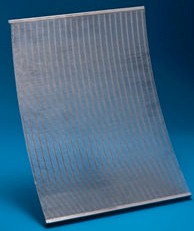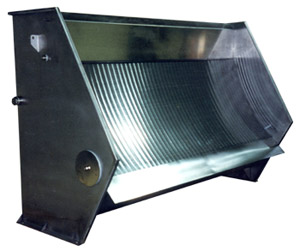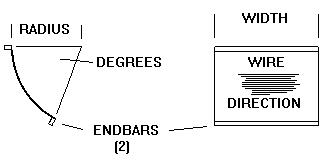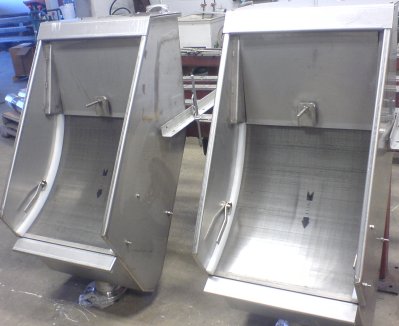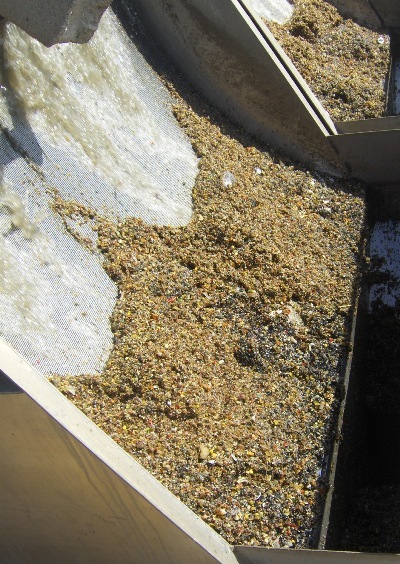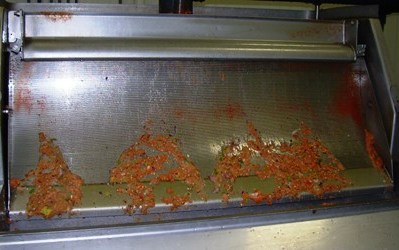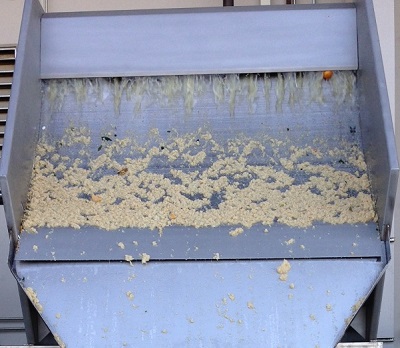|

Sieve
Bend Screen / Side Hill Screen Surfaces
The dewatering capacity of
a wedge wire cross flow sieve bend screen is primarily influenced
by the screen width, the slot opening, and the wire size (width). The
chart below shows typical
dewatering capacities in US gallons per minute (GPM) per foot of
screen width. Actual capacity
varies depending on the feed content and desired efficiency.
|
Application
|
Slot
Opening
|
Wire
Width |
GPM
/ FT |
| Coal,
20% solids |
.020"
|
.063"
|
120
|
| Coal,
20% solids |
.020"
|
.093"
|
100
|
| Cranberry
dewatering |
.020"
|
.063"
|
100
|
| Seafood,
plant effluent |
.020"
|
.063"
|
60
|
| Coal,
20% solids |
.040"
|
.093"
|
160
|
| Coal,
20% solids |
.040"
|
.120"
|
120
|
| Vegetable,
primary |
.040"
|
.093"
|
130
|
| Meat
Packing wash down |
.040"
|
.093"
|
60
|
| Coal |
.060"
|
.093"
|
210
|
| Municipal,
primary |
.060"
|
.093"
|
150
|
| Dairy,
wash down |
.060"
|
.093"
|
120
|
| Wood
Fiber plant effluent |
.060"
|
.093"
|
80
|
| Vegetable,
waste |
.125"
|
.093"
|
350
|
Screening
efficiency and solids capacity are directly related to the length (arc
length). Longer
arc lengths should be considered for feed containing a high percentage
of solids.
The
dewatering capacity of cross flow dewatering screens such as the sieve
bend
can be greatly increased by tilting the wedge wires. The wedge
wires are tilted 2 to 7
degrees depending on the
wire size and slot opening.
Flow
>>>
       
The
effective range of slot openings for a gravity-fed cross flow sieve
bend screen is
generally considered to be .015" to 1/8". The
installation angle of a sieve bend screen is
usually 50 to 60 degrees
from the horizon.
The point of size separation
is approximately 50% of the slot
opening size.
Industrial
Screen Products, Inc. 1997 - All Rights Reserved
|

